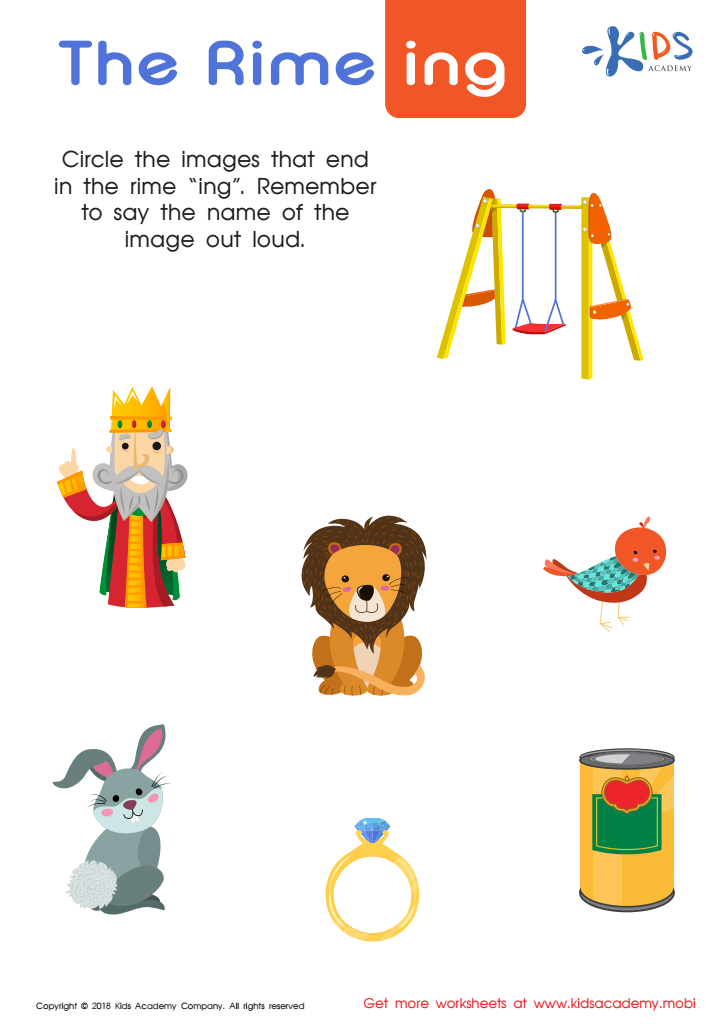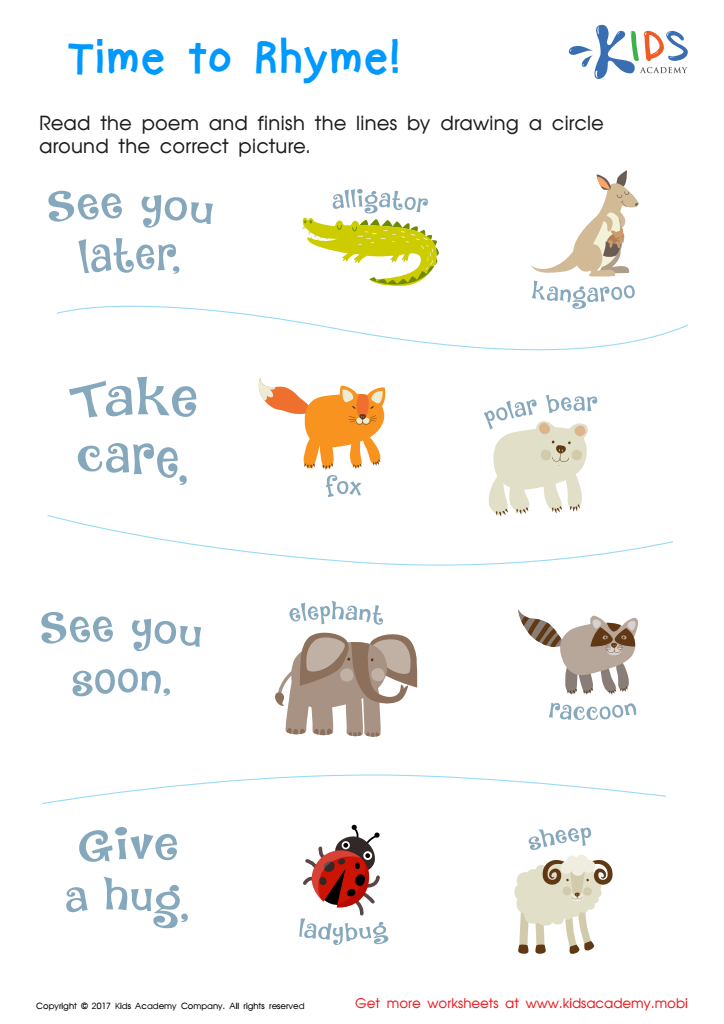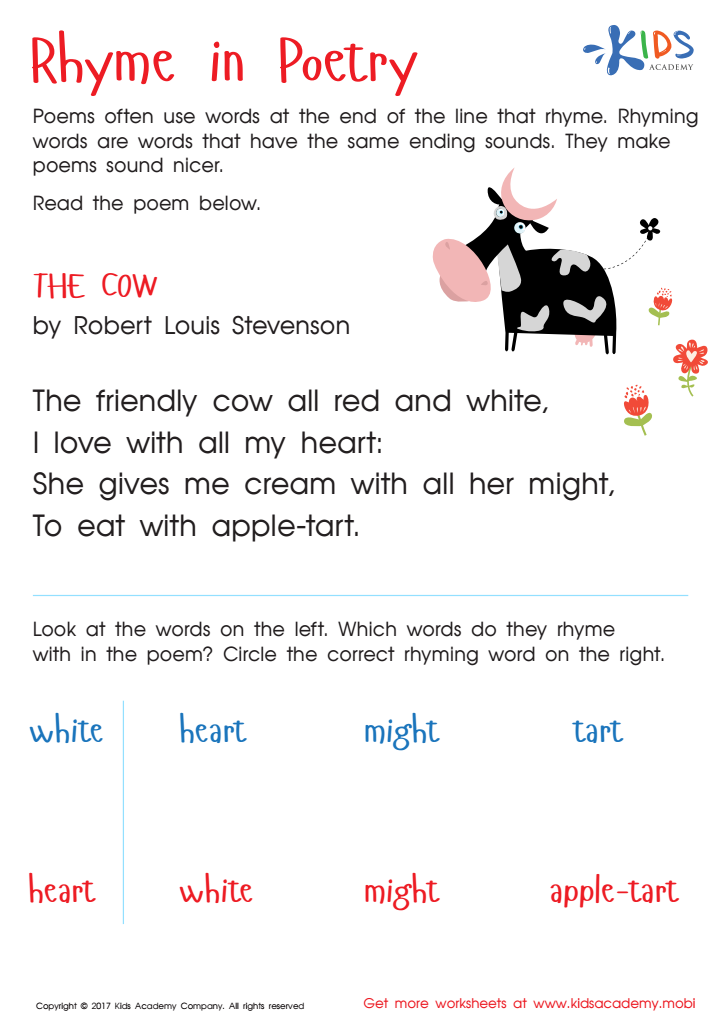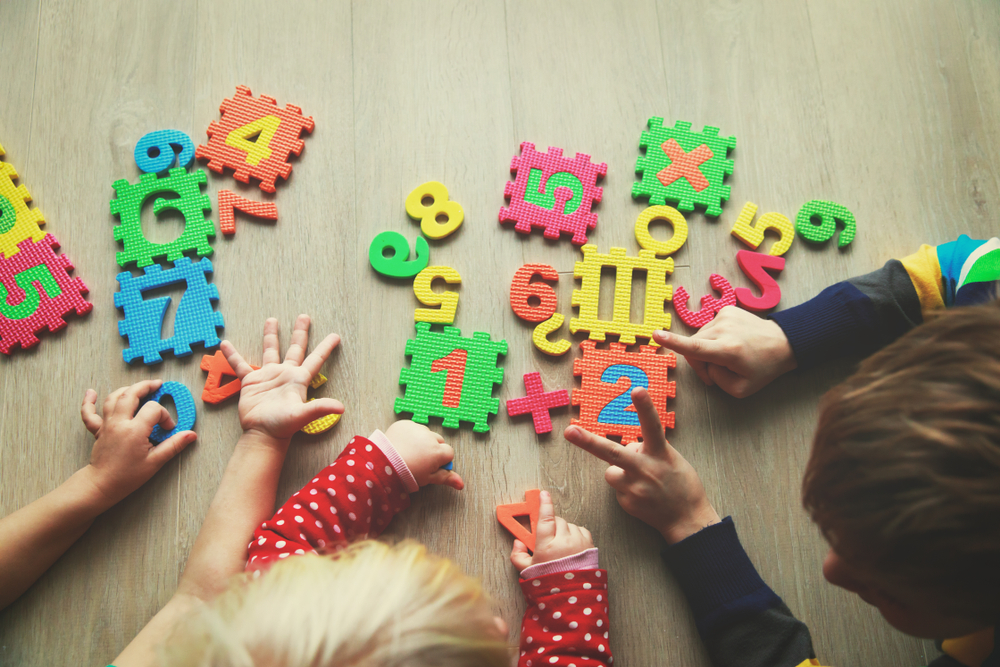Understanding Rhymes Reading Worksheets for Ages 6-9
3 filtered results
-
From - To
Welcome to our "Understanding Rhymes Reading Worksheets" designed specifically for children ages 6-9! These engaging and interactive worksheets help young learners develop their phonemic awareness and comprehension skills through the joyful exploration of rhyming words. By using colorful illustrations and fun activities, our worksheets make learning about rhymes exciting and enjoyable. Children will enhance their reading fluency and vocabulary while expressing their creativity through rhyme. Perfect for classrooms or at-home learning, our resources support a strong foundation in literacy, encouraging a lifelong love of reading. Explore our variety of worksheets today and watch your child's confidence in reading grow!


The Rime "ing" Worksheet


Time to Rhyme Rhyming Worksheet


Rhyme In Poetry Worksheet
Understanding rhymes is essential for children aged 6-9 as it forms a foundational skill for reading and literacy development. First, rhyming helps children recognize the sounds and patterns in words, which enhances phonemic awareness—a critical precursor to reading. By engaging with rhymes, children learn to decode words more easily, improving their reading fluency and confidence.
Furthermore, rhymes foster vocabulary expansion and comprehension skills. They introduce children to new words in a playful context, making them easier to remember and understand. This early exposure builds a rich linguistic environment, encouraging a love for language and storytelling.
Additionally, rhymes contribute to cognitive development. The repetitive and rhythmic nature of rhyming texts enhances memory and retention, making it easier for children to recall information. Rhymes also promote critical thinking and creativity, as children begin to make connections between sounds and meanings.
For parents and teachers, supporting rhyming activities—such as reading rhyming books or singing songs—creates a fun and engaging learning atmosphere. Ultimately, understanding rhymes is not just about language; it's a crucial step in nurturing a child's lifelong relationship with reading and learning. Investing time in rhyming activities can yield significant long-term benefits in literacy and academic success.
 Assign to My Students
Assign to My Students
















